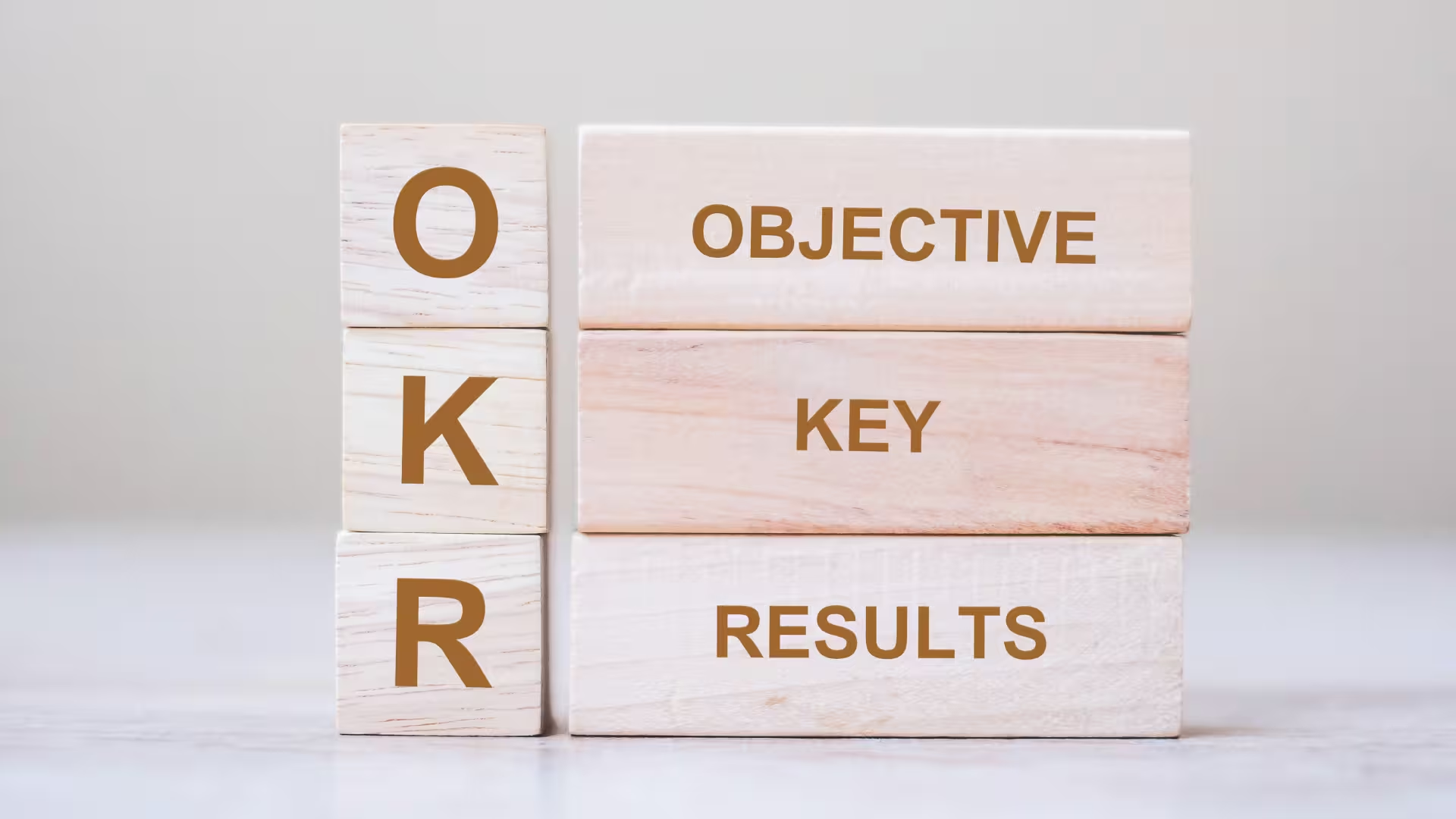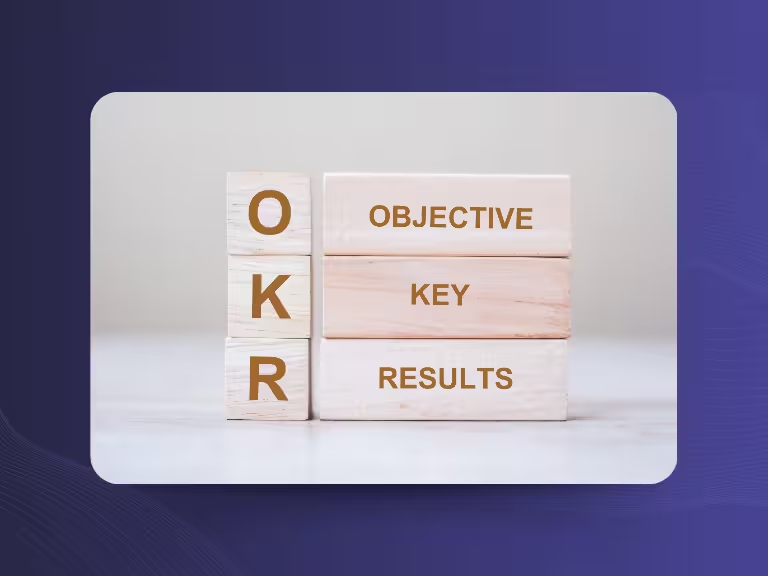Table of Contents
The OKR method (Objectives and Key Results) has evolved over recent years to become one of the most important frameworks for strategic goal management. Originally developed at Intel and popularized by Google, companies of all sizes now rely on this method to enable greater transparency, better focus, and agile working. In times when markets are rapidly changing and teams increasingly work remotely, it becomes ever more crucial to align all employees toward common goals.
The benefits of the OKR method are diverse: it creates clarity about priorities, enables quick adaptation to changing market conditions, and promotes team engagement through greater autonomy and responsibility. But how can you successfully implement OKRs? This article provides you with a practical guide including concrete steps, cultural aspects, common mistakes, and proven tools to ensure your OKR implementation succeeds from the very beginning.
What is the OKR Method? Fundamentals and How It Works
Definition of Objectives and Key Results
OKRs consist of two components: Objectives are inspiring, qualitative goals that motivate teams and provide clear direction. They answer the question "What do we want to achieve?" and should be formulated ambitiously yet understandably. Key Results, on the other hand, are measurable, concrete outcomes that show whether the Objective has been achieved. They answer the question "How do we know we've been successful?"
The crucial difference from traditional goal-setting methods like SMART lies in the flexibility and focus on results rather than activities. While SMART goals are often formulated statically and in detail, OKRs enable rapid adjustments and promote experimental learning.

Why Are More and More Companies Adopting OKRs?
The popularity of OKRs can be explained by their impact on three central areas: Transparency and team alignment emerge because all OKRs are visible to all participants. Everyone knows what others are working on and how their own goals contribute to company objectives. The method also promotes agile, adaptive goal management, as OKRs can be reviewed and adjusted quarterly.
Particularly noteworthy are the positive effects on employee engagement and motivation. A 2023 Workfront study shows that companies with successfully implemented OKRs see a 70% improvement in team alignment. Teams develop more ownership for their goals and work more independently on solutions.
Historical Background and Adoption
The OKR method was developed in the 1970s at Intel and later brought to Google by John Doerr, where it significantly contributed to the company's success. Today, companies like Spotify, LinkedIn, and Atlassian successfully use OKRs - no longer just in the tech industry, but across sectors including automotive, financial services, and healthcare.

Implementing the OKR Method: Step-by-Step Into Practice
Preparation and Fit Analysis
Before beginning the actual OKR implementation, a thorough analysis of company culture is crucial. Ask yourself: How open is your company to experiments? How do you handle mistakes? How transparent is communication between levels? These factors significantly influence the success of OKRs.
Conduct employee surveys and workshops to understand the cultural status quo. At the same time, you should clearly communicate why you want to introduce OKRs and what you aim to achieve with them. Transparency about the goals of the implementation creates trust and reduces resistance.
Training and Education for All Participants
Invest in comprehensive training for teams and leaders. A fundamental understanding of OKR methodology is a prerequisite for success. Define and fill the role of the OKR Coach or OKR Master - this person will become the most important supporter of the process and should bring both methodological expertise and moderation skills.
Train multipliers in the leadership level who act as role models and live the method in their teams. They are crucial for acceptance and successful implementation.
Starting a Pilot Project
Begin with an OKR pilot project in an engaged, representative team. Choose a team that is open to new things while simultaneously reflecting typical challenges of your company. Work together to develop the first company OKRs and start with practical implementation.
Establish regular check-ins from the beginning - ideally weekly reviews where progress is discussed and obstacles are identified. These learning loops are essential for the pilot project's success.
Iterative Company-Wide Rollout
After the pilot project, conduct a thorough review and document the lessons learned. What worked? Where were there difficulties? These insights flow into the gradual expansion to additional teams and departments.
The rollout should be iterative and continuously adapted to your company's specific needs. Not every process that worked in the pilot team can be transferred 1:1 to other areas.
Integration into Daily Business Operations
Establish regular OKR meetings and quarterly reviews as permanent components of company routine. Systematically connect OKRs with strategic company goals, creating a clear thread from vision to operational goals of individual teams.

Success Factors, Roles, and Common Pitfalls
Clear Role Distribution and Responsibilities
A successful OKR implementation depends on clear roles. The OKR Coach or OKR Master serves as the central process supporter, moderates OKR sessions, and helps with quality assurance of OKRs. Leaders act as role models and multipliers, while teams function as active co-creators and users of OKRs.
It's important that these roles are not only defined but also equipped with appropriate authority and resources. An OKR Coach without sufficient time or management support will not achieve sustainable success.
Typical Challenges and How to Master Them
Among the most common OKR challenges are unrealistically formulated or too many goals. Focus on 3-5 Objectives per quarter and ensure that Key Results are ambitious but achievable. A rule of thumb: If you achieve all Key Results at 100%, they were probably too easy.
Lack of transparency and communication represents another major risk. OKRs only work when they are visible to everyone and regularly discussed. Also avoid understanding OKRs as a static document - they are a living instrument that must adapt to changing circumstances.
Very important: Address mistakes and failures openly and use them as learning opportunities. A culture of mistake acceptance is fundamental for the long-term success of OKRs.
Fostering an Appropriate Company Culture
Company culture and OKRs are closely interlinked. Mistake acceptance, openness, and functioning feedback mechanisms are prerequisites for successfully implemented OKRs. Invest in workshops and create regular opportunities for exchange to develop the culture further.
An inspiring example is Ericsson, which successfully introduced OKRs through systematic cultural change. The company started by raising awareness of an experimental learning culture and developed standardized training materials that helped avoid overly ambitious goals and the resulting frustrations.

Tools, Measurability, and Sustainability of OKR Implementation
Technological Support for OKR Implementation
Modern OKR tools and software like Gtmhub, Perdoo, or Weekdone offer automated progress tracking and integration with existing systems like Jira or Slack. These tools not only facilitate OKR management but also create necessary transparency through dashboard views and automatic reminders.
For documentation and tracking of OKR meetings, tools like Sally can provide valuable support. Sally automatically protocols important decisions and ensures that all relevant information remains transparent and traceable - an important building block for successful OKR processes.
Evaluation and Continuous Improvement
Establish regular reviews as learning instruments - both monthly and quarterly. Measuring and evaluating OKRs means combining quantitative KPIs with qualitative feedback rounds. Actively use retrospectives for process optimization and methodology adaptation.
Regular evaluation should not only measure the degree of goal achievement but also question the quality of the OKRs themselves: Were they inspiring enough? Did they really lead to more focused work? Did they improve collaboration?
Sustainable Anchoring of the OKR Method
For sustainable OKR implementation, it's crucial to understand OKRs as a dynamic tool for long-term strategy execution. Systematically integrate them into your performance management and company culture. Build internal communities and exchange platforms where teams can share their OKR experiences.
Sustainable anchoring works best when OKRs are understood not as an additional process but as an integral part of strategic management. They should seamlessly integrate into existing management rhythms and improve them, not complicate them.
Conclusion
Implementing the OKR method means more than just implementing a new goal-setting method - it's a cultural transformation toward greater transparency, agility, and employee engagement. OKRs provide companies with a clear framework for agile, transparent goal management that is of invaluable worth, especially in our fast-paced business world.
Success depends significantly on structured preparation, clear roles, well-thought-out pilot projects, and appropriate technical support. At the same time, continuous adaptation and regular evaluation are crucial for sustainable success.
Companies that successfully introduce OKRs not only secure their competitiveness in the digital age but also create a work environment where teams work independently and continuously develop themselves. The investment in a well-planned OKR implementation pays off long-term through better results, higher employee satisfaction, and greater adaptability to market changes.

Try meeting transcription now!
Experience how effortless meeting notes can be – try Sally free for 4 weeks.
Test NowOr: Arrange a Demo Appointment

.avif)



